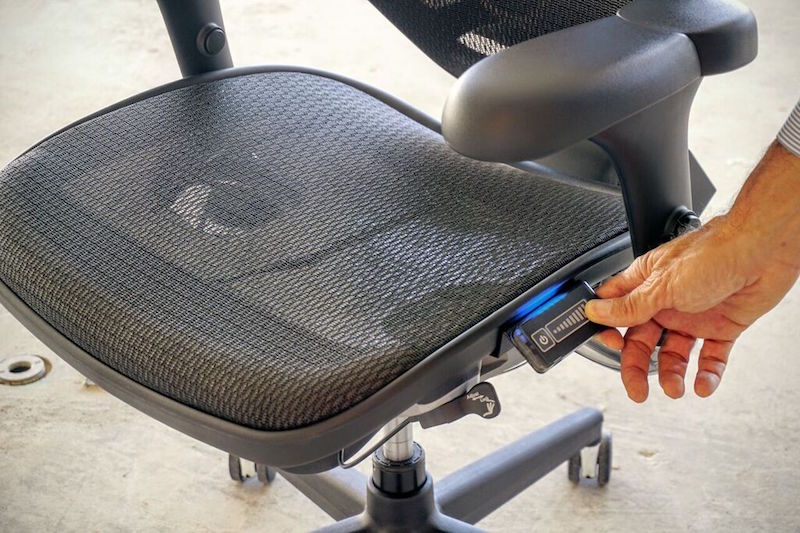Offices can oftentimes turn into a real life Goldilocks tale. One worker may be too hot, while another one is too cold. Meanwhile, a third employee is, you guessed it, just right. It is a question as old as the concept of the office itself: What is the most efficient way to manage the temperature of an office so everyone is comfortable? Like trying to determine if the universe actually is infinite or whether the chicken or the egg came first, it seems to be a problem without an attainable solution. Or is it?
As one startup is asking, what if we have been focused on heating and cooling the wrong thing? After all, it isn’t the room that necessarily needs temperature adjustment, but the bodies within the room. That’s where Personal Comfort Systems' Hyperchair comes into play. It may sound like something an astronaut gets strapped into as part of their training, but for the most part, the Hyperchair looks just like a regular office chair, with one major difference: it can actively heat or cool the person sitting in it.
Developed by researchers at the Center for Built Environment at UC Berkeley, the Hyperchair uses heating tape that is woven into the fabric of the chair to warm the occupant much in the same way a heated car seat works. And for anyone who finds himself or herself running a bit warm on a daily basis, tactically placed fans can be used to wick body heat away like a cool, lakefront breeze. The temperature of the chair can be adjusted either by using the onboard control panel on the side of the seat or by using a smartphone app. The back and the seat of the chair can be adjusted separately, which allows for one to be set on heat while the other is set on cool, just in case you ever find yourself wearing shorts and a parka on the same day.
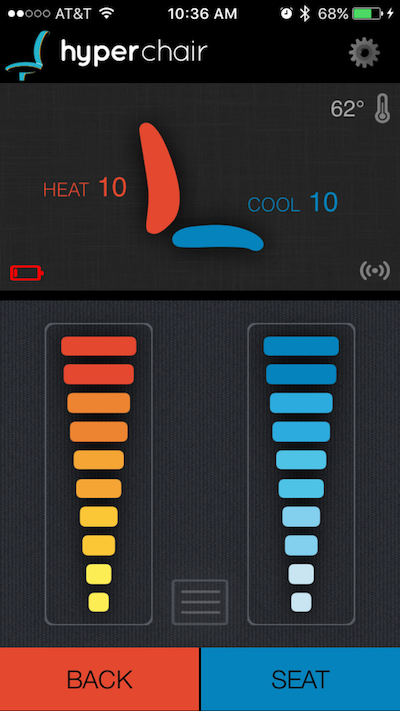 Photo Courtesy of Personal Comfort Systems
Photo Courtesy of Personal Comfort Systems
This technology comes at a cost, however, as the chairs range from $1,000 to $1,500 each, depending on the size of the order. And while that is certainly expensive for a chair, the company says this money will be made back in energy savings. In the winter the heat can be turned down a few degrees and the same goes for the air conditioning in the summer.
"If you relax it a couple of degrees, what you're going to find is a 5% to 10% energy savings on the heating and cooling system," Peter Rumsey, Founder and CEO of Personal Comfort Systems, said in an interview with Co. Exist.
The chairs will also be rigged with Wi-Fi and temperature sensors allowing them to communicate with the building regarding various temperature related issues. Additionally, in some climates or in mild seasons such as spring or fall, offices may be able to turn off their thermostats completely and use just the chairs for temperature regulation. With 30% of global carbon emissions coming from building energy consumption, not only can the chairs help with utility costs, but they can also be considered environmentally friendly.
For the time being, the startup is only offering the Hyperchair to large companies, but the hope is that it will eventually be made available for individual orders. The Hyperchair looks to solve a problem that has existed for years while providing everyone with a bit of the Goldilocks treatment of enjoying things that are just right... you know, without all of that breaking and entering business.
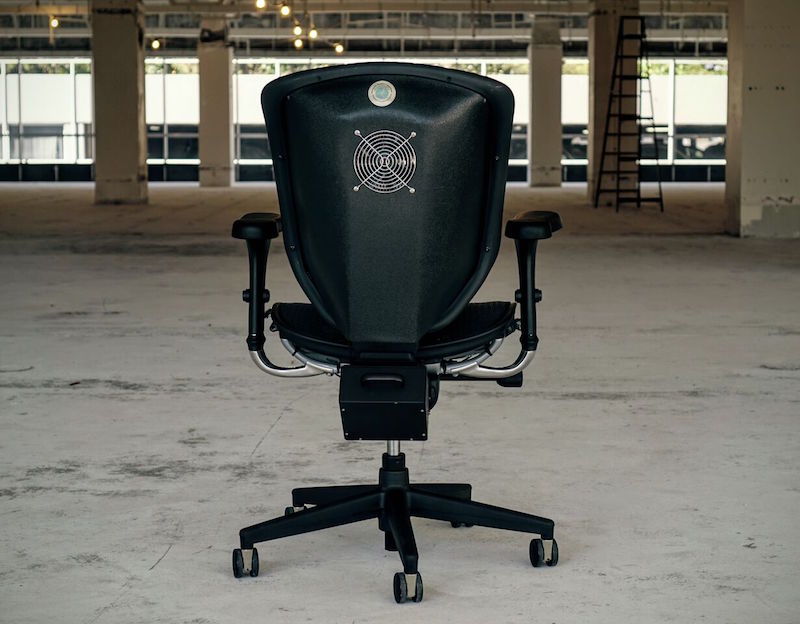 Photo Courtesy of Personal Comfort Systems
Photo Courtesy of Personal Comfort Systems
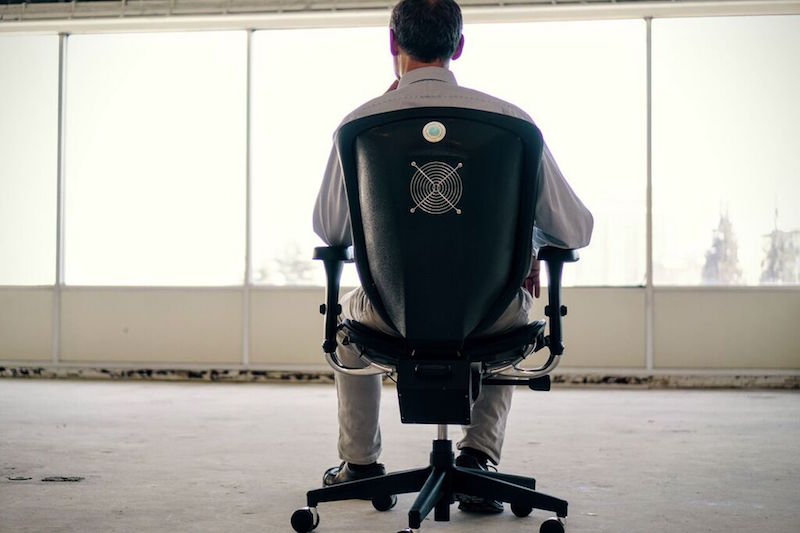 Photo Courtesy of Personal Comfort Systems
Photo Courtesy of Personal Comfort Systems
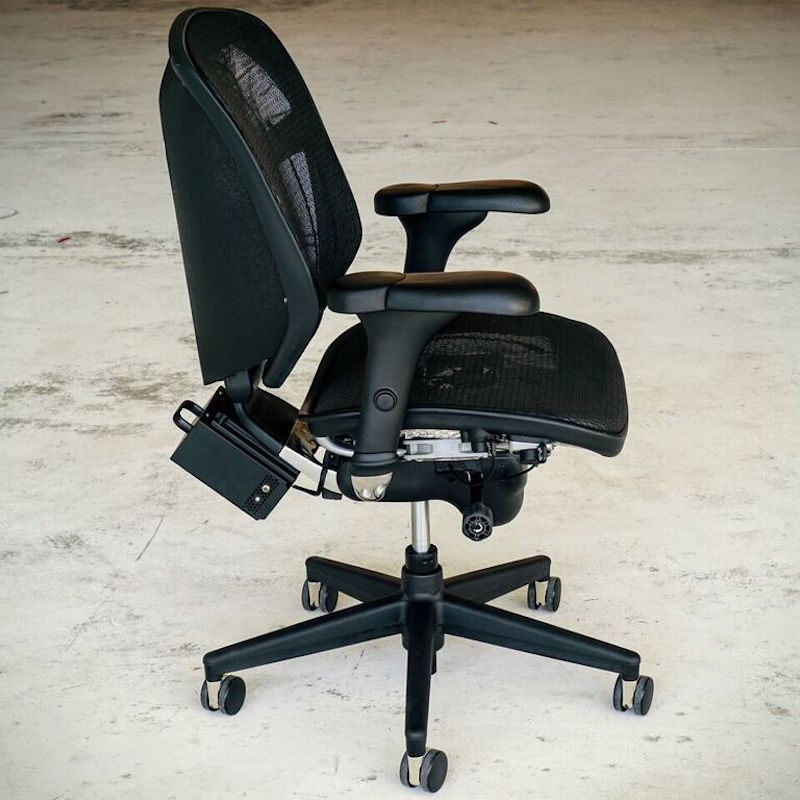 Photo Courtesy of Personal Comfort Systems
Photo Courtesy of Personal Comfort Systems
 Photo Courtesy of Personal Comfort Systems
Photo Courtesy of Personal Comfort Systems
Related Stories
Codes and Standards | Apr 30, 2024
Updated document details methods of testing fenestration for exterior walls
The Fenestration and Glazing Industry Alliance (FGIA) updated a document serving a recommended practice for determining test methodology for laboratory and field testing of exterior wall systems. The document pertains to products covered by an AAMA standard such as curtain walls, storefronts, window walls, and sloped glazing. AAMA 501-24, Methods of Test for Exterior Walls was last updated in 2015.
BIM and Information Technology | Mar 11, 2024
BIM at LOD400: Why Level of Development 400 matters for design and virtual construction
As construction projects grow more complex, producing a building information model at Level of Development 400 (LOD400) can accelerate schedules, increase savings, and reduce risk, writes Stephen E. Blumenbaum, PE, SE, Walter P Moore's Director of Construction Engineering.
AEC Innovators | Feb 28, 2024
How Suffolk Construction identifies ConTech and PropTech startups for investment, adoption
Contractor giant Suffolk Construction has invested in 27 ConTech and PropTech companies since 2019 through its Suffolk Technologies venture capital firm. Parker Mundt, Suffolk Technologies’ Vice President–Platforms, recently spoke with Building Design+Construction about his company’s investment strategy.
MFPRO+ Special Reports | Feb 22, 2024
Crystal Lagoons: A deep dive into real estate's most extreme guest amenity
These year-round, manmade, crystal clear blue lagoons offer a groundbreaking technology with immense potential to redefine the concept of water amenities. However, navigating regulatory challenges and ensuring long-term sustainability are crucial to success with Crystal Lagoons.
AEC Tech | Feb 20, 2024
AI for construction: What kind of tool can artificial intelligence become for AEC teams?
Avoiding the hype and gathering good data are half the battle toward making artificial intelligence tools useful for performing design, operational, and jobsite tasks.
Building Tech | Feb 20, 2024
Construction method featuring LEGO-like bricks wins global innovation award
A new construction method featuring LEGO-like bricks made from a renewable composite material took first place for building innovations at the 2024 JEC Composites Innovation Awards in Paris, France.
Modular Building | Jan 19, 2024
Building with shipping containers not as eco-friendly as it seems
With millions of shipping containers lying empty at ports around the world, it may seem like repurposing them to construct buildings would be a clear environmental winner. The reality of building with shipping containers is complicated, though, and in many cases isn’t a net-positive for the environment, critics charge, according to a report by NPR's Chloe Veltman.
Sponsored | BD+C University Course | Jan 17, 2024
Waterproofing deep foundations for new construction
This continuing education course, by Walter P Moore's Amos Chan, P.E., BECxP, CxA+BE, covers design considerations for below-grade waterproofing for new construction, the types of below-grade systems available, and specific concerns associated with waterproofing deep foundations.
Sustainability | Nov 1, 2023
Researchers create building air leakage detection system using a camera in real time
Researchers at the U.S. Department of Energy’s Oak Ridge National Laboratory have developed a system that uses a camera to detect air leakage from buildings in real time.
Engineers | Oct 12, 2023
Building science: Considering steel sheet piles for semi-permanent or permanent subsurface water control for below-grade building spaces
For projects that do not include moisture-sensitive below-grade spaces, project teams sometimes rely on sheet piles alone for reduction of subsurface water. Experts from Simpson Gumpertz & Heger explore this sheet pile “water management wall” approach.


